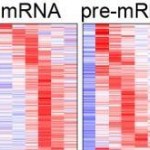
Science magazine seemed to imply there was some grousing about the new Fundamental Physics Prizes awarded by billionaire Yuri Milner, but we in Rehovot think it’s a good thing. While one can quibble about which fields are still underfunded, we believe that any support for truly basic research -- the kind whose applications, if they exist, will be decades in the future, but which enlightens today us about the universe we live in – is most welcome.
It turns out that two (at least) of the nine winners have ties to the Weizmann Institute, and, completely by chance, we had recently written…
You’ve heard of the carbon cycle, maybe even the nitrogen cycle. But have you given much thought lately to the sulfur cycle? New research in last week’s Science suggests that we should be paying a bit more attention to the way this element moves through the atmosphere, biosphere, oceans and land. Over the last 500 million years, sulfur seems to have played a fairly crucial role in keeping the oxygen levels in the atmosphere at a nice, breathable 20%.
It is microbes and weather that do the work. Microorganisms in the ocean take in sulfur in the form of dissolved sulfate – that is, in a sulfur…
We were just getting used to the idea of our digestive tract as an ecosystem. There are 10 times as many bacteria in our gut as there are cells in our bodies, and the ecological balance between the different types might affect everything from our tendency to gain weight to our general health and susceptibility to various diseases.
Now, a Weizmann Institute researcher has exposed a whole new layer of this ecosystem: the viruses – called phages – that infect our gut bacteria.
Dr. Rotem Sorek and his team identified hundreds of these phages in the human gut. They were able to find them thanks to…
Rose Eveleth talks to Assaf Vardi today on the Scientific American Expeditions blog:
http://blogs.scientificamerican.com/expeditions/2012/07/11/you-wanted-to-know-who-are-these-scientists-introducing-assaf-vard
One of our scientists, Dr. Assaf Vardi, is off on a month-long cruise. He is on the Knorr, a research vessel operated by the Woods Hole Oceanographic Institute, with a team from the Weizmann Institute and another four research teams on a route that will take them from the Azores to Iceland. On the way, they will be sampling the plankton; among other things they want to understand how the molecular processes that take place in these single-celled organisms affect everything from the ocean's food chain to the oxygen in the atmosphere. Rose Eveleth is posting from the ship daily on the…
Blurring, chopping and blocking. Three online items this week all deal with some pretty dynamic phenomena.
The blurring is in our perceptions. It turns out that if you even think you have lost money in an experiment, your ability to distinguish between musical notes will be hampered. What’s the connection? Dr. Rony Paz has been showing that this tendency to lump sounds together is tied to fear. In our evolutionary past, humans may have survived because anything that sounded remotely like a predator aroused an immediate “fight or flight” response. But if mild stress can provoke a similar…
Geneticist Dr. Maya Schuldiner has a lab full of the latest, shiniest robotic equipment. So why is she showing us pictures of socks? What she and her lab group mean to illustrate is that they have trained their research robots to find pairs – not of socks, alas, but of proteins.
The team and their robots entered an area of research in which protein matches had previously been painstakingly identified one at time – and discovered hundreds of new pairs in one fell swoop. Scientists are interested in these pairs because they are necessary for transporting signaling molecules – a group that…
Would you learn a language by taking a written text and changing letters here and there, or moving a few words around, and asking whether the meaning has changed? That may not be the most efficient way to learn French, but a Weizmann Institute scientist is betting that it will be a very useful way to improve our grasp of what is written in our DNA. Prof. Eran Segal, a computer scientist cum biologist, and his team developed a quick method for rewriting DNA that enables thousands of changes to be created at once, each in its own little, living cell, and measuring the effects of each such…
Not many Israelis make it all the way to the South Pole. (In fact, very few people go there, at all. Not only is it really, really cold, it is extremely difficult and expensive to transport people, gear and necessities to this remote and inhospitable corner of the earth.) So when we learned that Dr. Hagar Landsman, who recently joined the Weizmann Institute’s Physics Faculty, has a part-time gig at the IceCube neutrino detector array, we simply had to write about her. Landsman’s specialty is particle detectors, and IceCube has 5,000 of them buried under several kilometers of ice. In her brief…
New online articles this week highlight two forays into the world of synthetic biology. Each, in its own way, gives a different perspective on how sophisticated the field has become in the past few years, since smiley-face DNA was first introduced.
Prof. Benjamin Geiger of the Weizmann Institute and Prof. Joachim Spatz of the Max Planck Institute for Intelligent Systems, Germany are leading an unusual collaboration. One is a biologist, the other a materials scientist. Together, they are working on models that incorporate the whole gamut from completely man-made materials to 100% biological…
You might not think of cell suicide as a sexy subject - but it is actually quite hot. Cells off themselves for any number of reasons: In embryonic development, cell suicide helps shape the growing organism. In adults, suicide is the last resort of a cell whose DNA is too damaged to repair, and its death prevents cancer, among other things. You can think of cell suicide as a prerequisite for the existence of multicellular life.
Prof. Atan Gross has, for the past several years, been focusing on a pair of cell suicide proteins - BID and ATM. The more Gross studies these proteins, the more…
Sometime around junior high, this Weizmann science writer stumbled upon Mathematical Games, the late Martin Gardner's monthly math puzzle at the back of my mom's Scientific American, and I became a devotee. The best ones, of course, were those that required a little sideways thinking, and these yielded the pleasure of that "Aha" moment when the answer became clear. (For more on the neurobiology of the Aha moment, look at our site.)
So it is no surprise (to me at least) that of the hundreds of science education programs offered through the Davidson Institute of Science Education (the…
No, the woman with the microphone is not crooning lounge songs to customers. That is Prof. Deborah Fass, and she is explaining the latest structural biology research in her lab.
And this is Weizmann Institute president Prof. Daniel Zajfman in an official Science on Tap 2012 T shirt giving pub goers a talk on the economic and social importance of basic science.
No matter how big we make the yearly Science on Tap event, it is never big enough. Those who don't make their reservations in time are left out on the sidewalk straining to hear. People have been writing and calling begging us to…
Explain to a pub full of beer drinkers exactly what it is you do in your lab. That's the idea behind Science on Tap, which will be taking place again this year in bars, coffee shops and restaurants in the heart of Tel Aviv's entertainment district at the end of the month.
A Science on Tap billboard like this hangs over the entrance to Tel Aviv - the number has since risen to 55
This one is the biggest event yet: Over 55 Weizmann professors, doctoral students and assorted researchers have volunteered to spend an evening talking about their science to a public out looking for information and…
Have you given any thought to your retirement? Planning on pottering? Catching up on reading? Thinking you'll cross that bridge when you come to it?
According to Prof. Bernardo Vidne, retirement can be more like jumping out of a plane than crossing a bridge - even if you are prepared. The story of Vidne's working career is almost archetypical: From a poor childhood in Argentina, he rose to become head of the largest cardiac surgery department in Israel. In addition to some 40,000 surgeries - 10,000 on children - Vidne authored around 300 papers in medical journals and taught many students.…
Earthquakes are once again in the news, this time in Mexico. Although it is only the biggest quakes that make international headlines, we might take a minute to contemplate other quakes - the ones you'll never feel. So-called "slow" or "silent" earthquakes slip so softly they don't even show up on regular seismographic equipment.
As the name implies, slow quakes release the energy built up along the fault over hours or even days, as opposed to mere seconds for a fast, shaking quake. So why should we care about what happens in earthquakes that even scientists have barely noticed? For one…
The patterns of the dark craters on the near side of the Moon have spurred the imagination of observers from all cultures: Some visualize a woman, others a rabbit, or, like most of us, they see the "Man in the Moon."
Near side
The explanation as to why we always see the Man in the Moon - that is, why we only see one side - is that tidal forces caused the Moon to slow its spin until it reached the present point. It now takes the same amount of time to rotate around its own axis as it does to revolve around Earth. It is this synchronous rotation that causes the moon to "lock" with Earth, with…
A somewhat accidental discovery and random meetings between proteins in a cell: These are the subjects of two new online articles. Each, it its way, involves a technological advance that will, in turn, lead to further scientific discovery.
The first involves a partnership between a physics group and a cancer-research group. Among other things, such collaboration is essential for dealing with large data sets - multiple gene expression patterns, for example. When the team made their discovery, they were looking not just at gene expression, but at pieces of genes. More precisely, they were…
What would you say are the strongest three factors associated with the salaries of major-league baseball players? According to a popular, well-established algorithm, the main influential factors are walks, intentional walks and runs batted in.
How much does he earn?
But a paper recently published in Science reports on a new data analysis tool, which is able to find interesting relationships and trends in complex data sets - relationships that are invisible to other types of statistical analyses.
This could be a big deal: Large data sets with thousands of variables are increasingly common in…
DNA testing can reveal how closely related you are to a group of people halfway around the world or, if you're doing evolutionary research, where organisms fit on taxonomic trees. The same DNA tests, when performed on the cells in a single human body, can be used to reconstruct lineage trees that can trace the cells' ancestry back to the embryo.
The principle in all three cases is the same: DNA amasses mutations over time, and these mutations can be used to assess how far back two people, organisms or cells shared a common parent.
The idea for the cell lineage trees comes from the group of…
















